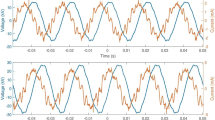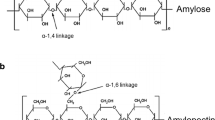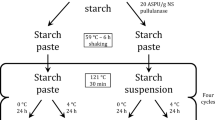Abstract
The effect of potato flour as partial replacement of wheat flour at levels of 6%, 15% and 30% on dough rheological properties and flavor properties of baked bread were investigated. Results showed that the substitution ratio at low level of 6% in bread baking is perfectly feasible, the potato bread is softer than the all-wheat bread. Potato flour substitution at higher level will result in a serious decreasing of processing performance, due to the protein weakening increasing, the dough formation time and stability time decreasing. Furfural and acetone can be used as marker components to identify the potato bread from the all-wheat bread, based on their exclusive presence in bread contains potato flour. Furfural is a nonenzymatic browning reaction product in potato flour, while acetone may come from the potato flour made with some defective potatoes (soft-rot-infected). The relative content of hydroxyacetone in the crust is high, and the hexyl alcohol is low, the result is opposite in the crumb. In conclusion, potato flour at low substitution rate such as 6% is feasible.
Resumen
Se investigó el efecto de la harina de papa como un reemplazo parcial de la harina de trigo a niveles de 6%, 15%, y 30%, en las propiedades reológicas de la masa y de sabor de pan cocinado. Los resultados demostraron que la sustitución a nivel bajo de 6% en el cocinado del pan es perfectamente posible, el pan de papa es más suave que el que se hace completamente de trigo. La sustitución con harina de papa a niveles más altos resultará en una disminución seria del comportamiento en el procesado, debido al aumento en el debilitamiento de la proteína, el tiempo de formación de la masa, y en la disminución en el tiempo de estabilización. El furfuraldehido y la acetona pudieran usarse como componentes marcadores para identificar el pan de papa respecto del completamente de trigo, con base en su presencia exclusiva en pan que contenga harina de papa. El furfuraldehido es un producto de reacción de oscurecimiento no enzimático en la harina de papa, mientras que la acetona pudiera venir de la harina de papa hecha con algunas papas defectuosas (infectadas con pudrición blanda). El contenido relativo de hidroxiacetona en la corteza es alto y el hexil-alcohol es bajo, lo opuesto que en el migajón. En conclusión, la harina de papa en sustitución a bajo nivel, como el 6%, es posible.



Similar content being viewed by others
References
Barak, S., D. Mudgil, and B.S. Khatkar. 2015. Biochemical and functional properties of wheat gliadins: A review. Critical Reviews in Food Science and Nutrition 55: 357–368.
Cho, I.H., and D.G. Peterson. 2010. Chemistry of bread aroma: A review. Food Science and Biotechnology 19: 575–582.
Coleman, E.C., C.T. Ho, and S.S. Chang. 1981. Isolation and identification of volatile compounds from baked potatoes. Journal of Agricultural and Food Chemistry 29: 42–48.
Damodaran, S. 2013. Amino acids, peptides, and proteins. Electrophoresis 34: 321–430.
Dubat, A., and N. Boinot. 2012. Mixolab application handbook, Rheological and enzymatic analysis. France: Chopin Technologies.
Eggleston, G., P.E. Omoaka, and D.O. Ihedioha. 1992. Development and evaluation of products from cassava flour as new alternatives to wheaten breads. Journal of the Science of Food and Agriculture 59: 377–385.
Glabau, C.A. 1958. Cookie production with potato flour as an ingredient. Bakers Weekly 178: 40–42.
Gómez, A., C. Ferrero, A. Calvelo, M.C. Añón, and M.C. Puppo. 2011. Effect of mixing time on structural and rheological properties of wheat flour dough for bread making. International Journal of Food Properties 14: 583–598.
Hamer, R.J., T.V. Vliet, P.R. Shewry, and A.S. Tatham. 2000. Understanding the structure and properties of gluten: An overview. Special Publication-Royal Society of Chemistry 25: 157–185.
Huang, G. 2015. China to grow and eat more potatoes. Frontiers in Ecology and the Environment 13: 68–68.
Ijah, U.J., H.S. Auta, M.O. Aduloju, and S.A. Aransiola. 2014. Microbiological, nutritional, and sensory quality of bread produced from wheat and potato flour blends. International Journal of Food Science 2014: 1–6.
Jin, C.Y., D. Xu, F.K. Zeng, Y.C. Zhao, Y.C. Yang, G.Q. Gao, G.H. Wen, and G. Liu. 2017a. A simple method to prepare raw dehydrated potato flour by low-temperature vacuum drying. International Journal of Food Engineering 13: 1–10. https://doi.org/10.1515/ijfe-2017-0127.
Jin, C.Y., F.K. Zeng, and G. Liu. 2017b. Recovery of protease inhibitors from potato fruit water by expanded bed adsorption chromatography in pilot scale. American Journal of Potato Research, (2018) 95: 1–8. https://doi.org/10.1007/s12230-017-9605-1.
Kahraman, K., O. Sakıyan, S. Ozturk, H. Koksel, G. Sumnu, and A. Dubat. 2008. Utilization of Mixolab® to predict the suitability of fllours in terms of cake quality. European Food Research and Technology 227: 565–570.
Köksel, H., K. Kahraman, T. Sanal, D.S. Ozay, and A. Dubat. 2009. Potential utilization of Mixolab for quality evaluation of bread wheat genotypes. Cereal Chemistry 86: 522–526.
Kroll, R. 1955. The use of potato flour in cracker production. Biscuit and Cracker Baker 4: 40–41.
Liu, X.L., T.H. Mu, H.N. Sun, M. Zhang, and J.W. Chen. 2016. Influence of potato flour on dough rheological properties and quality of steamed bread. Journal of Integrative Agriculture 15: 2666–2676.
Liu, X., T. Mu, H. Sun, Z. Miao, J. Chen, and M.L. Fauconnier. 2017. Comparative study of the nutritional quality of potato-wheat steamed and baked breads made with four potato flour cultivars. International Journal of Food Sciences and Nutrition 68: 168–178.
Liu, X., T. Mu, H. Sun, M. Zhang, J. Chen, and M.L. Fauconnier. 2018. Influence of different hydrocolloids on dough thermo-mechanical properties and in vitro starch digestibility of gluten-free steamed bread based on potato flour. Food Chemistry 239: 1064–1074.
Macritchie, F. 1992. Physicochemical properties of wheat proteins in relation to functionality. Advances in Food and Nutrition Research 36: 1–87.
Macritchie, F., D.L.D. Cros, and C.W. Wrigley. 1990. Flour polypeptides related to wheat quality. Advances in Cereal Science and Technology 10: 79–145.
Maeda, T., H.K. Ji, Y. Ubukata, and N. Morita. 2009. Analysis of volatile compounds in polished-graded wheat flour bread using headspace sorptive extraction. European Food Research and Technology 228: 457–465.
Morris, W.L., T. Shepherd, S.R. Verrall, J.W. McNicol, and M.A. Taylor. 2010. Relationships between volatile and non-volatile metabolites and attributes of processed potato flavour. Phytochemistry 71: 1765–1773.
Mu, T., H. Sun, and X. Liu. 2017. Potato staple food processing technology. Singapore: Springer.
Pedreschi, F. 2009. Fried and dehydrated potato products. In Advances in potato chemistry and technology, ed. H. Singh and L. Kaur, 319–337. Burlington: Elsevier Inc.
Pétel, C., B. Onno, and C. Prost. 2016. Sourdough volatile compounds and their contribution to bread: A review. Trends in Food Science and Technology 59: 105–123.
Pico, J., J. Bernal, and M. Gómez. 2015. Wheat bread aroma compounds in crumb and crust: A review. Food Research International 75: 200–215.
Salim-ur-Rehman, A. Paterson, and J.R. Piggott. 2006. Flavour in sourdough breads: A review. Trends in Food Science and Technology 17: 557–566.
Sapers, G.M., S.F. Osman, C.J. Dooley, and O. Panasiuk. 1971. Flavor quality of explosion puffed dehydrated potato. 3. Contribution of pyrazines and other compounds to the toasted off-flavor. Journal of Food Science 36: 93–95.
Seevaratnam, V., P. Banumathi, M.R. Premalatha, S.P. Sundaram, and T. Arumugam. 2012. Studies on the preparation of biscuits incorporated with potato flour. World Journal of Dairy and Food Sciences 7: 79–84.
Seitz, L.M., O.K. Chung, and R. Rengarajan. 1998. Volatiles in selected commercial breads. Cereal Chemistry 75: 847–856.
Shewry, P.R., and A.S. Tatham. 1997. Disulphide bonds in wheat gluten proteins. Journal of Cereal Science 25: 207–227.
Storey, M. 2007. The harvested crop. In Potao biology and biotechnology-advances and perspectives, ed. D. Vreugdenhil, J. Bradshaw, C. Gebhardt, F. Govers, M.A. Taylor, D.K. MacKerron, and H.A. Ross, 441–470. Amsterdam: Elsevier.
Varns, J.L., and M.T. Glynn. 1979. Detection of disease in stored potatoes by volatile monitoring. American Potato Journal 56: 185–197.
Waterer, D.R., and M.K. Pritchard. 1984. Volatile monitoring as a technique for differentiating between E. carotovora, and C. sepedonicum, infections in stored potatoes. American Potato Journal 61: 345–353.
Waterer, D.R., and M.K. Pritchard. 1985. Production of volatile metabolites in potatoes infected by Erwinia carotovora var. carotovora and, E. carotovora var. atroseptica. Canadian Journal of Plant Pathology 7: 47–51.
Yánez, E., D. Ballester, H. Wuth, W. Orrego, V. Gattás, and S. Estay. 1981. Potato flour as partial replacement of wheat flour in bread: Baking studies and nutritional value of bread containing graded levels of potato flour. International Journal of Food Science and Technology 16: 291–298.
Zeng, F.K., H. Liu, P.J. Ma, and G. Liu. 2013. Recovery of native protein from potato root water by expanded bed adsorption with amberlite XAD7HP. Biotechnology and Bioprocess Engineering 18: 981–988.
Acknowledgements
This work was supported by the China Agriculture Research System (CARS-10), the Modern Agricultural Industry Technology System of Gansu Province (GARS-03-P6), the National Key Research and Development Plan (2016YFD0401302-02, 2018YFF0213505), the Science and Technology Major Project of Gansu Province (1602NKDJ022-1), and the Science and Technology Planing Project of Lanzhou (2016-3-123).
Author information
Authors and Affiliations
Corresponding authors
Rights and permissions
About this article
Cite this article
Zeng, Fk., Liu, H., Yu, H. et al. Effect of Potato Flour on the Rheological Properties of Dough and the Volatile Aroma Components of Bread. Am. J. Potato Res. 96, 69–78 (2019). https://doi.org/10.1007/s12230-018-9690-9
Published:
Issue Date:
DOI: https://doi.org/10.1007/s12230-018-9690-9




